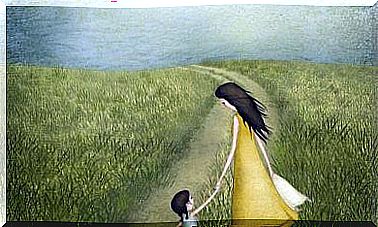Napping With Children – Advantages

Napping is a hotly debated topic: while many families consider it an important tradition, others don’t have time to rest during the day. In this article, we explain the benefits of napping for children.
Voices for and against napping in children
Many claim that only children under 3 years of age need to take a nap. This way, they can recover from the tiredness they have accumulated during the day. At night they are not overloaded, restless and irritable.
In terms of duration, researchers say babies up to 6 months of age should ideally sleep between 3 and 4 hours at noon, although it can be slightly longer in the first few months of life. The average duration is reduced by an hour between 9 months and a year.
After two years, we advise you not to let the little ones sleep for more than 2 hours. This duration is reduced by half an hour after 3 years. From the age of 4 or 5, the afternoon nap should not last longer than an hour.
Can a nap hurt?
However, others point out the inconvenience, especially in children who have trouble sleeping or breathing. The main reason is that you take too long naps, which can lead to headaches and drastically change the way you sleep.
5 benefits of napping in children
Aside from the comments above, there are many more benefits to napping for children. Here are the top five benefits:
1. Restores energy
Because of the physical tiredness that can arise during the morning, this lunch break is very positive for the little ones.
During this time, a number of complex processes take place in the brain that help to gather new ideas and absorb what has been learned.
Logically, your muscles also benefit from this break. After hours of adventures and games, the little ones will feel ready again to satisfy their instincts of curiosity.

2. Improves their performance
Various studies show that children who nap regularly tend to be more active and alert – whether at school or playing sports – than those who do not sleep. Their main argument is that it reduces fatigue and improves cognitive performance.
3. Promotes sociability
A key feature of afternoon nap is that it improves mood, especially for the little ones. Therefore, they will be more attentive, patient and in a better mood during the day.
The result of this positive combination is greater (and better) sociability. It also creates a counter-effect: Nobody wants to deal with irritable and restless children, especially no other children.
4. Enables growth
When the body is resting, it produces what is known as “growth hormone”, the somatotropin. Of course, this is essential for the little ones to grow.
In addition , cardiovascular, respiratory and endocrine functions are regulated during sleep. It is a very productive rest for the body, whose functions never pause.
5. Promotes mental wellbeing
All the advantages mentioned help to promote the balance of the organism and thus contribute to well-being; the mind is one of the favored areas. In short, naps can:
- promote memory.
- Reduce stress.
- lead to a better mood.

Tips to encourage your child to nap
As a mother, you can use certain strategies to encourage napping with your children. Some examples:
- Establish a routine and stick to it.
- Make sure it doesn’t take too long.
- Prepare a quiet and light-poor environment. Too many stimuli prevent them from falling asleep.
- Don’t put your child to bed immediately after eating. Give it a few minutes to digest.
Now that you know the benefits of napping in children, you will no doubt consider introducing this healthy habit into your child’s life.
Aside from how good it will be for them, it will also help you take a short break and replenish your energy. Get the ball rolling, mom!









